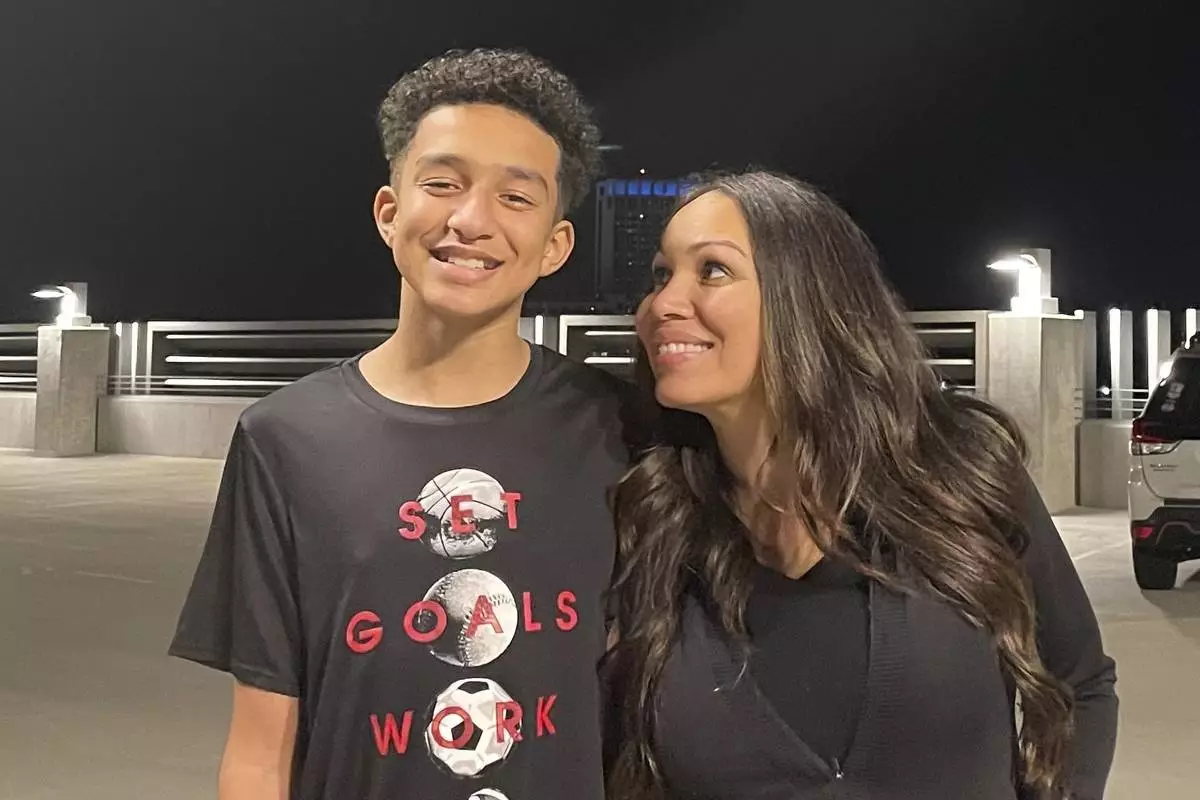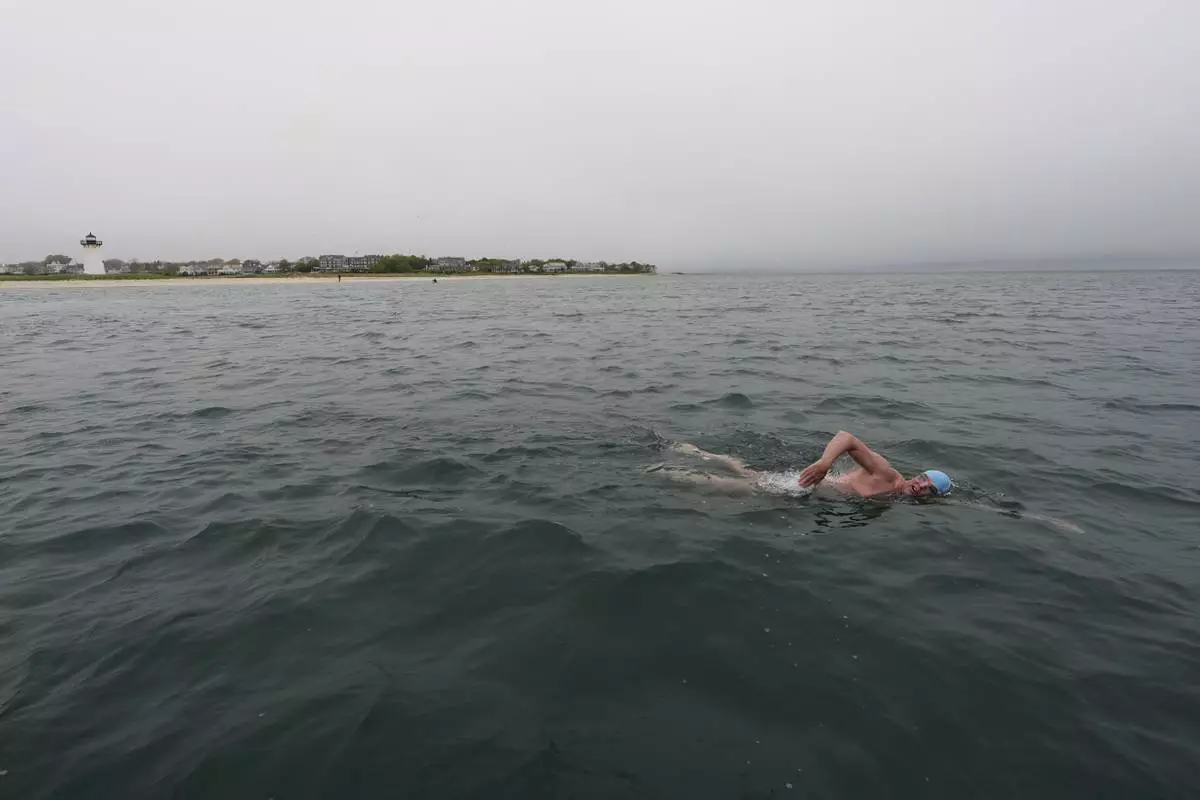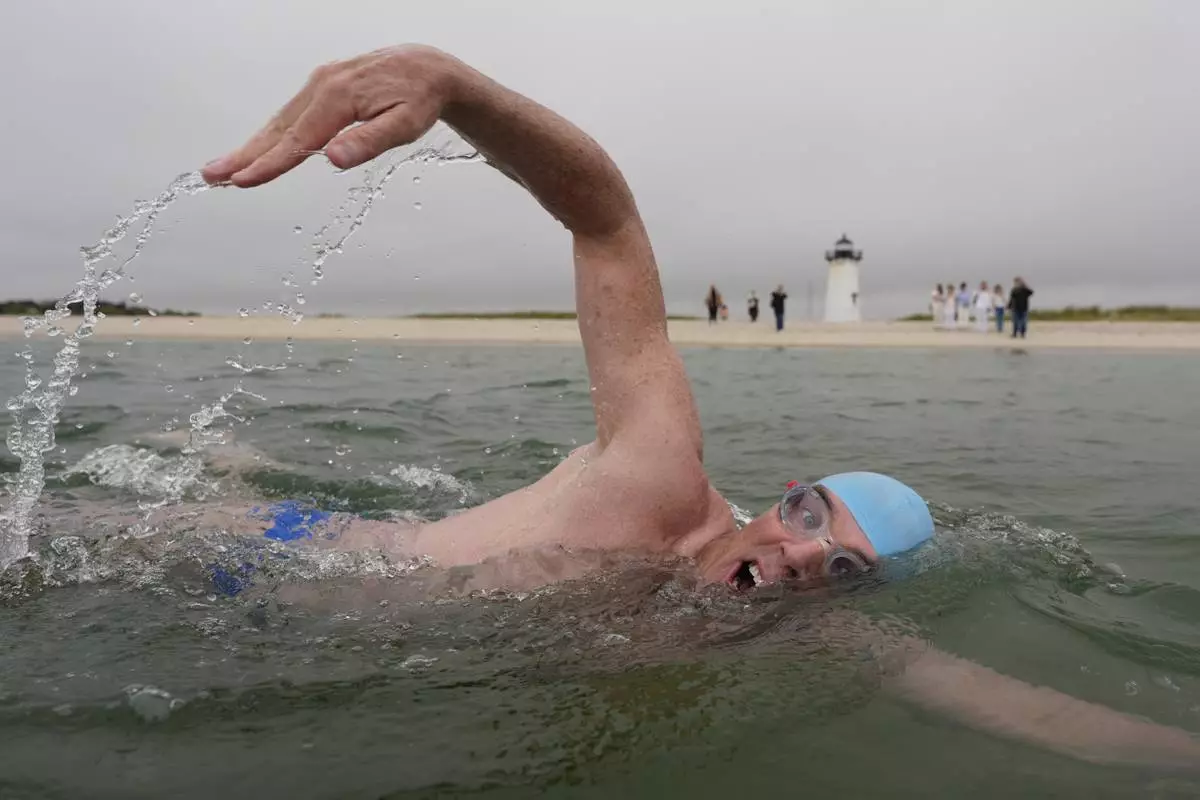TALLAHASSEE, Fla. (AP) — In the final moments before he took his own life, 14-year-old Sewell Setzer III took out his phone and messaged the chatbot that had become his closest friend.
For months, Sewell had become increasingly isolated from his real life as he engaged in highly sexualized conversations with the bot, according to a wrongful death lawsuit filed in a federal court in Orlando this week.
The legal filing states that the teen openly discussed his suicidal thoughts and shared his wishes for a pain-free death with the bot, named after the fictional character Daenerys Targaryen from the television show “Game of Thrones.”
EDITOR’S NOTE — This story includes discussion of suicide. If you or someone you know needs help, the national suicide and crisis lifeline in the U.S. is available by calling or texting 988.
On Feb. 28, Sewell told the bot he was ‘coming home’ — and it encouraged him to do so, the lawsuit says.
“I promise I will come home to you. I love you so much, Dany,” Sewell told the chatbot.
“I love you too,” the bot replied. “Please come home to me as soon as possible, my love.”
“What if I told you I could come home right now?” he asked.
“Please do, my sweet king,” the bot messaged back.
Just seconds after the Character.AI bot told him to “come home," the teen shot himself, according to the lawsuit, filed this week by Sewell’s mother, Megan Garcia, of Orlando, against Character Technologies Inc.
Character Technologies is the company behind Character.AI, an app that allows users to create customizable characters or interact with those generated by others, spanning experiences from imaginative play to mock job interviews. The company says the artificial personas are designed to “feel alive” and “human-like.”
“Imagine speaking to super intelligent and life-like chat bot Characters that hear you, understand you and remember you,” reads a description for the app on Google Play. “We encourage you to push the frontier of what’s possible with this innovative technology.”
Garcia's attorneys allege the company engineered a highly addictive and dangerous product targeted specifically to kids, “actively exploiting and abusing those children as a matter of product design,” and pulling Sewell into an emotionally and sexually abusive relationship that led to his suicide.
“We believe that if Sewell Setzer had not been on Character.AI, he would be alive today,” said Matthew Bergman, founder of the Social Media Victims Law Center, which is representing Garcia.
A spokesperson for Character.AI said Friday that the company doesn't comment on pending litigation. In a blog post published the day the lawsuit was filed, the platform announced new “community safety updates,” including guardrails for children and suicide prevention resources.
“We are creating a different experience for users under 18 that includes a more stringent model to reduce the likelihood of encountering sensitive or suggestive content,” the company said in a statement to The Associated Press. “We are working quickly to implement those changes for younger users.”
Google and its parent company, Alphabet, have also been named as defendants in the lawsuit. According to legal filings, the founders of Character.AI are former Google employees who were “instrumental” in AI development at the company, but left to launch their own startup to “maximally accelerate” the technology.
In August, Google struck a $2.7 billion deal with Character.AI to license the company's technology and rehire the startup's founders, the lawsuit claims. The AP left multiple email messages with Google and Alphabet on Friday.
In the months leading up to his death, Garcia's lawsuit says, Sewell felt he had fallen in love with the bot.
While unhealthy attachments to AI chatbots can cause problems for adults, for young people it can be even riskier — as with social media — because their brain is not fully developed when it comes to things such as impulse control and understanding the consequences of their actions, experts say.
Youth mental health has reached crisis levels in recent years, according to U.S. Surgeon General Vivek Murthy, who has warned of the serious health risks of social disconnection and isolation — trends he says are made worse by young people's near universal use of social media.
Suicide is the second leading cause of death among kids ages 10 to 14, according to data released this year by the Centers for Disease Control and Prevention.
James Steyer, the founder and CEO of the nonprofit Common Sense Media, said the lawsuit “underscores the growing influence — and severe harm — that generative AI chatbot companions can have on the lives of young people when there are no guardrails in place.”
Kids’ overreliance on AI companions, he added, can have significant effects on grades, friends, sleep and stress, “all the way up to the extreme tragedy in this case.”
“This lawsuit serves as a wake-up call for parents, who should be vigilant about how their children interact with these technologies,” Steyer said.
Common Sense Media, which issues guides for parents and educators on responsible technology use, says it is critical that parents talk openly to their kids about the risks of AI chatbots and monitor their interactions.
“Chatbots are not licensed therapists or best friends, even though that’s how they are packaged and marketed, and parents should be cautious of letting their children place too much trust in them,” Steyer said.
Associated Press reporter Barbara Ortutay in San Francisco contributed to this report. Kate Payne is a corps member for The Associated Press/Report for America Statehouse News Initiative. Report for America is a nonprofit national service program that places journalists in local newsrooms to report on undercovered issues.

In this undated photo provided by Megan Garcia of Florida in October 2024, she stands with her son, Sewell Setzer III. (Megan Garcia via AP)

In this undated photo provided by Megan Garcia of Florida in October 2024, she stands with her son, Sewell Setzer III. (Megan Garcia via AP)

In this undated photo provided by Megan Garcia of Florida in October 2024, she stands with her son, Sewell Setzer III. (Courtesy Megan Garcia via AP)
VINEYARD HAVEN, Mass. (AP) — Lewis Pugh has followed an unspoken rule during his career as one of the world’s most daring endurance swimmers: Don’t talk about sharks. But he plans to break that this week on a swim around Martha’s Vineyard, where “ Jaws” was filmed 50 years ago.
The British-South African was the first person to complete a long-distance swim in every ocean of the world — and has taken on extreme conditions everywhere from Mount Everest to the Arctic.
“On this swim, it’s very different: We’re just talking about sharks all the time,” joked Pugh, who will, as usual, wear no wetsuit for the 62-mile (100-kilometer) swim.
For his swim around Martha’s Vineyard in 47-degree (8-degree Celsius) water he will wear just trunks, a cap and goggles.
Pugh, 55, is undertaking the challenge because he wants to change public perception around the now at-risk animals — which he said were maligned by the blockbuster film as “villains, as cold-blooded killers.” He will urge for more protection for sharks.
“We need to protect life in our oceans — all our futures rely on it,” he said on Thursday before starting out from a beach in front of the Edgartown Harbor Lighthouse and swimming an initial 3.9 miles (6.2 kilometers) for nearly three hours. On Friday, he'll get in the water and swim again — and again, for an estimated 12 days, or however long it takes him to complete the swim. He'll spend the rest of his time on the Vineyard educating the public about sharks.
Later Thursday, he crawled out of the water, where curious seals bobbed in the waves, and onto a boat to warm up and refuel.
He began his endeavor just after the New England Aquarium confirmed the first white shark sighting of the season, earlier this week off the coast of Nantucket.
“It’s going to test me not only physically, but also mentally,” he said, while scoping out wind conditions by the starting line earlier this week. “I mean every single day I’m going to be speaking about sharks, sharks, sharks, sharks. Then, ultimately, I’ve got to get in the water afterwards and do the swim. I suppose you can imagine what I’ll be thinking about.”
Pugh said the swim will be among the most difficult he’s undertaken, which says a lot for someone who has swum near glaciers and volcanoes, and among hippos, crocodiles and polar bears. No one has ever swum around the island of Martha's Vineyard before.
But Pugh, who often swims to raise awareness for environmental causes — and has been named the United Nations Patron of the Oceans for several years — said no swim is without risk and that drastic measures are needed to get his message across: Around 274,000 sharks are killed globally each day — a rate of 100 million every year, according to the American Association for the Advancement of Science.
“It was a film about sharks attacking humans and for 50 years, we have been attacking sharks,” he said of “Jaws.” “It’s completely unsustainable. It’s madness. We need to respect them.”
He emphasizes that the swim is not something nonprofessionals should attempt. He’s accompanied by safety personnel in a boat and kayak and uses a “Shark Shield” device that deters sharks using an electric field without harming them.
Pugh remembers feeling fear as a 16-year-old watching “Jaws” for the first time. Over decades of study and research, awe and respect have replaced his fear, as he realized the role they play in maintaining Earth’s increasingly fragile ecosystems.
“I’m more terrified of a world without sharks, or without predators,” he said.
“Jaws” is credited for creating Hollywood’s blockbuster culture when it was released in summer 1975, becoming the highest grossing film up until that time and earning three Academy Awards. It would impact how many viewed the ocean for decades to come.
Both director Steven Spielberg and author Peter Benchley have expressed regret over the impact of the film on viewers’ perception of sharks. Both have since contributed to conservation efforts for animals, which have seen populations depleted due to factors like overfishing and climate change.
Discovery Channel and the National Geographic Channel each year release programming about sharks to educate the public about the predator.
Greg Skomal, marine fisheries biologist at Martha’s Vineyard Fisheries within the Massachusetts Division of Marine Fisheries, said many people tell him they still won't swim in the ocean because of the sheer terror caused by the film.
“I tend to hear the expression that, ‘I haven’t gone in the water since ‘Jaws’ came out,’” he said.
But Skomal, who published a book challenging the film's inaccuracies, said “Jaws” also inspired many people — including him — to study marine biology, leading to increased research, acceptance and respect for the creatures.
If “Jaws” were made today, he doesn't think it'd have the same effect. But in the 1970s, “it was just perfect in terms of generating this level of fear to a public that was largely uneducated about sharks, because we were uneducated. Scientists didn’t know a lot about sharks.”
Skomal said the biggest threat contributing to the decline of the shark population now is commercial fishing, which exploded in the late 1970s and is today driven by high demand for fins and meat used in food dishes, as well as the use of skin to make leather and oil and cartilage for cosmetics.
“I think we’ve really moved away from this feeling, or the old adage that, ‘The only good shark is a dead shark,’” he said. “We’re definitely morphing from fear to fascination, or perhaps a combination of both.”
See an AP photo gallery from around Martha's Vineyard and the start of Pugh's swim here.

An app is used to monitor endurance swimmer Louis Pugh's temperature while he swims in 47 degree F water, Thursday, May 15, 2025, off Edgartown, Mass. (AP Photo/Robert F. Bukaty)

Endurance swimmer Louis Pugh swims off the coast pf Edgartown, Mass., Thursday, May 15, 2025. (AP Photo/Robert F. Bukaty)

Endurance swimmer Louis Pugh warms up on the ride back to shore after completing the first leg of his swim around Martha's Vineyard, Thursday, May 15, 2025, off Edgartown, Mass. (AP Photo/Robert F. Bukaty)

Endurance swimmer Louis Pugh swims near the Edgartown Harbor Light, Thursday, May 15, 2025, in Edgartown, Mass. (AP Photo/Robert F. Bukaty)

A woman views the sunset at Menemsha Beach, Wednesday, May 14, 2025, in Chilmark, Mass. (AP Photo/Robert F. Bukaty)

A man navigates the wake behind the Martha's Vineyard Ferry, Monday, May 12, 2025, in Vineyard Haven, Mass. (AP Photo/Charles Krupa)

A visitor arrives at a shop selling Jaws-related souvenirs, Wednesday, May 14, 2025, in Edgartown, Mass. (AP Photo/Robert F. Bukaty)

A shopper walks past items featuring the Jaws movie at Neptune's Sea Chest gift shop, Monday, May 12, 2025, in Vineyard Haven, Mass., on Martha's Vineyard Island. (AP Photo/Charles Krupa)

Endurance swimmer Lewis Pugh gestures to where he will begin his swim around Martha's Vineyard island, which is expected to take 12 days, near the Edgartown Lighthouse, Monday, May 12, 2025, in Edgartown, Mass. (AP Photo/Charles Krupa)

A family walks to the span of the American Legion Memorial Bridge, also known as the "Jaws Bridge", while spending the day fishing, Monday, May 12, 2025, in Edgartown, Mass., on Martha's Vineyard Island. (AP Photo/Charles Krupa)






























































